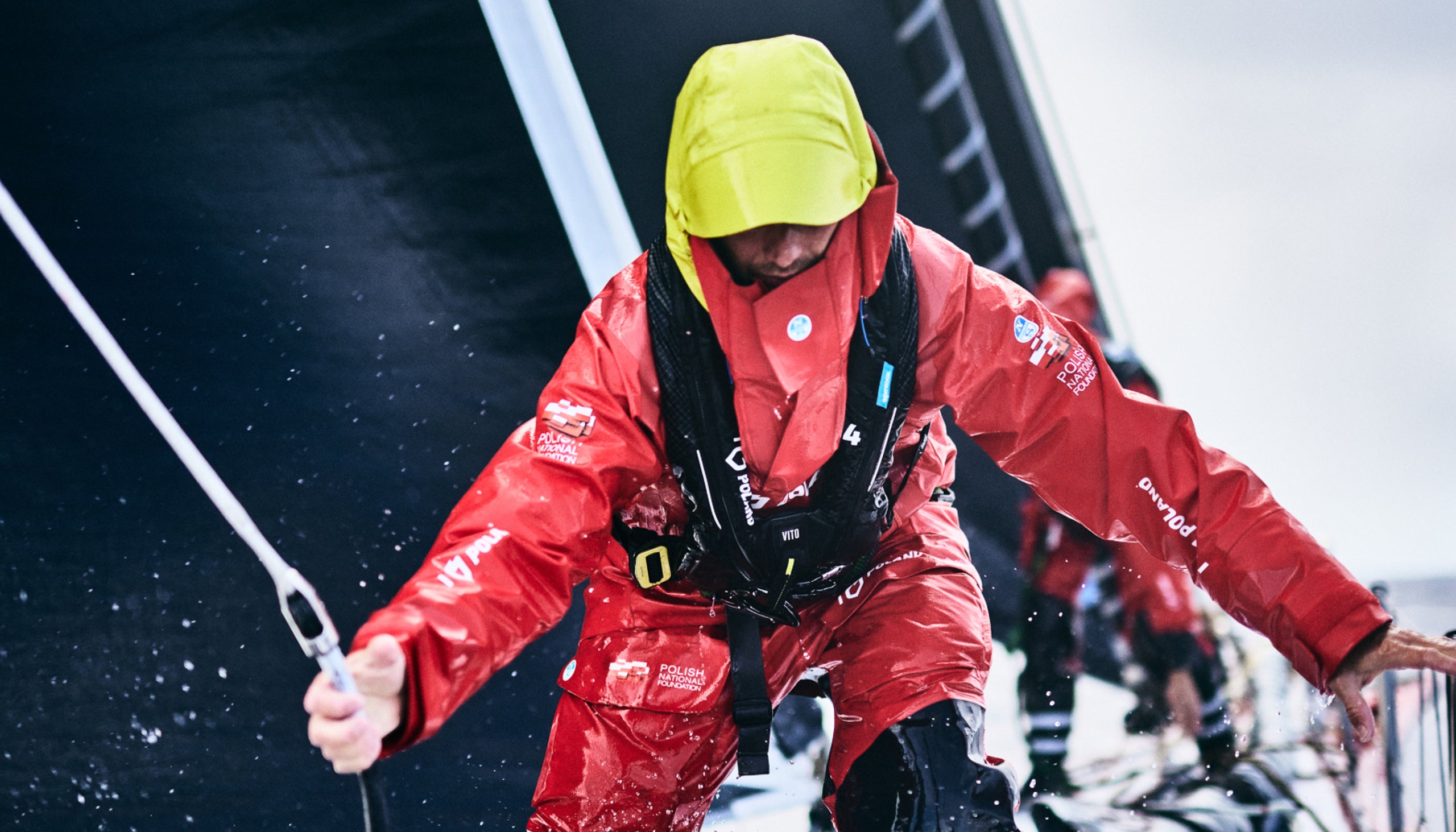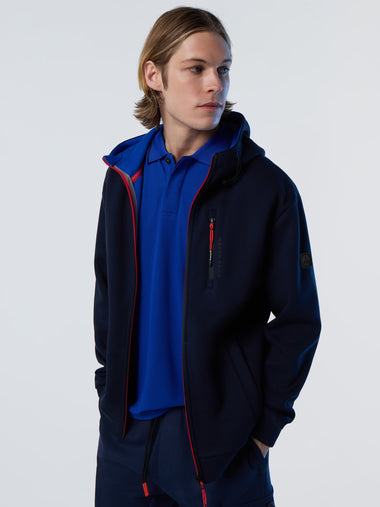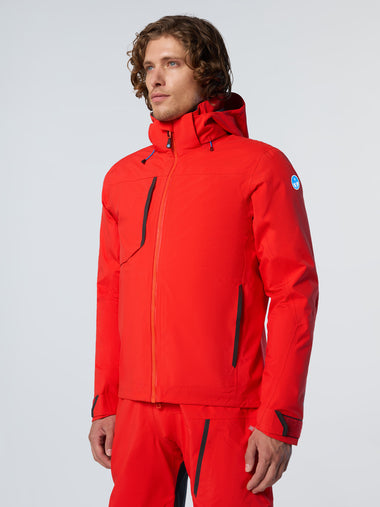
HOW TO CARE FOR YOUR FOUL WEATHER GEAR
HOW TO CARE FOR YOUR FOUL WEATHER GEAR
Nigel Musto, North Sails Performance Clothing Director, gives us his top tips on maximizing the life of Foul Weather gear.
There is no bigger name in the marine technical clothing industry than Nigel Musto. For over 35 years Nigel has designed sailing gear to keep the world's best offshore racers dry. He is also a highly skilled sailor, trialing for the 1988 Olympic Games, completing six Rolex Fastnet races (including on the maxi trimaran Banque Populaire VII), and winning an Open 60 double-handed Around Britain and Ireland.
Nigel joined North Sails in 2019 when he was invited to create the best foul weather gear on the planet, which culminated in the launch of the North Sails Performance Clothing in 2021. It was crowned Clothing Innovation of the Year at 2023’s British Yachting Awards.
Buying Foul Weather gear is a significant financial commitment. But if you look after it right, it’s one that with average use you should only need to do every 4–5 years.
Nigel answers the most common questions we get asked about looking after Foul Weather gear. Here are his expert tips.
Q: What is the most important thing I can do to extend the lifetime of my waterproof kit?
A: Wash it and give it some love every now and again. Gore-Tex loves the washing machine. Not many people do it, but use non-biological powder, get it in the washing machine every three months at a minimum to refresh it.
Outside that, wash it off with fresh water after you've been sailing, and dry it thoroughly. The amount of kit that I've seen over my life that's come back with black mold on it because a yachty has finished his weekend sailing, then put it wet in a kit bag, and got it out the next weekend to find that funnily enough it's got mold around it. That's not good—and can be easily avoided.
Q: When I first bought my jacket the water beaded off. It doesn’t now and I feel like it’s leaking. What can I do?
A: To make the water bead up and run off your kit, all waterproof garments are treated with a DWR (Durable Waterproof Repellent) finish. Essentially, it keeps the fibers of the face fabric of your kit standing to attention like a soldier, and the water rolls off. Over time salt, dirt and abrasion can stop the DWR working efficiently, making the face fabric absorb water—we say the garment has ‘wetted out’. This makes you feel cold and clammy—like the jacket or trousers are leaking—even though the garment is still completely watertight.
If this has happened to you, the first thing you need to do is wash your kit (see my first answer above). This really is the single most important thing you can do to keep your kit in peak condition.
Then—and most people don’t believe me here—you need to dry it; put it in the tumble dryer and make sure you follow the care label instructions. This is the only way to reinvigorate the DWR coating. If your garment has latex seals, though, you can’t do this.
Once you've tumble-dried it, test the DWR by spraying some water on it. If it beads up and rolls off you’re done, get back on the water. If it doesn’t you need to apply a new DWR finish (but make sure your kit is clean and dry first). There are plenty of these available online; my personal favorite is Grangers Performance Repel Plus Spray.
I prefer the spray-on products to the wash-in products as the DWR only coats the outer face of the garment. Wash-in products coat inside and out which encourages moisture to condense on the inside.
When designing the new North Sails Performance Clothing line we did review this problem to see if there was anything we could do, aside from a DWR coating, to stop a garment from wetting out.
Working with Gore-Tex we developed our TightWeave face fabrics—literally finer yarns in a tighter weave—which significantly reduces the water North Sails kit face fabric absorbs even when the DWR has failed—and calling time on that cold and clammy feeling.

Q: I’m sure my trousers are leaking. Will reproofing the DWR coating solve the problem?
A: Short answer: No! If you’re genuinely getting wet on the inside of your kit then reproofing isn’t going to help. All Gore-Tex products are covered by the Gore-Tex ‘Guaranteed to Keep you Dry’ promise. There is a dedicated Gore-Tex repair center in every country in the world. Contact their customer services, explain the issue, and they’ll take in your kit and either repair, replace or refund you. Even if you’ve torn your jacket Gore-Tex can provide you with a quote for the repair. Have your proof of purchase to hand and contact them.
Q: I’ve torn my Gore-Tex jacket. Can I get it fixed?
A: Yes, certainly. If you’ve ripped your jacket Gore-Tex can fix it for you. They’ll take the garment, assess it and give you a quote for the repair. You can find details of their authorized repair centers all over the world here.
Q: When I’m trying on wet weather gear in the store what advice would you give on making sure I get the right fit?
A: Ultimately you need to think of what your end use for the product is. Are you doing short round-the-cans racing or are you heading offshore for a significant duration? This will decide how loose-fitting you want the garment to be to allow layers underneath (remember the 3-layer system and make sure they breathe together to ensure moisture is wicked away from the body).
Don’t wear anything underneath your foul weather gear that has a membrane or a woven face as it will encourage condensation inside your foulies and will prevent moisture from escaping. Polypropylene or Merino next to skin and fleece/fiber pile mid layers are the best options.
Comfort is paramount to your kit choice. You need unrestricted movement in the shoulder and arms and then enough room in the trousers to allow you to take the large step up from the cockpit to the coach roof.
Ensure your collar choice is right for your end use. A big collar and hood may feel perfect in-store, but if you don’t really need it for your boat then it can become a nuisance. Ditto if you’re heading offshore for several days: you won’t regret the chance to retreat into a large protective collar during a cold night watch.
Just remember, lightweight and unrestrictive Inshore kit might be the most comfortable product to wear, but at 2am on the rail in 30 knots of breeze offshore the hood, collar and closures will not be up to the job. Value for money takes on a very different concept when you’re wet, cold and still have 2 days left until the finish.


























































